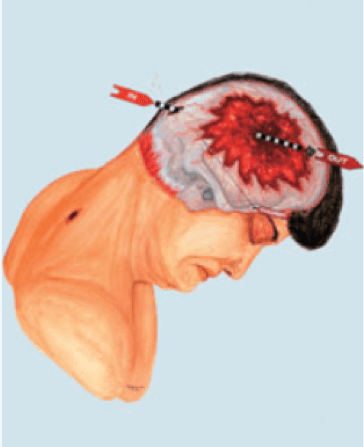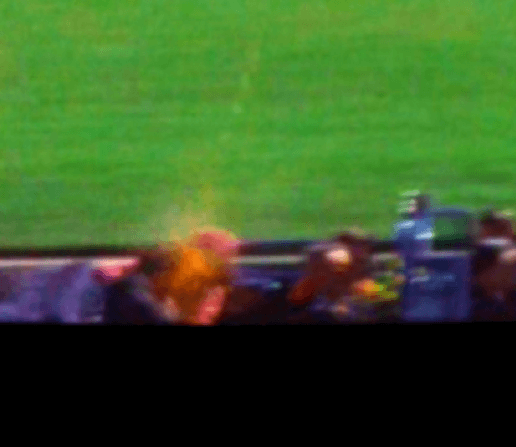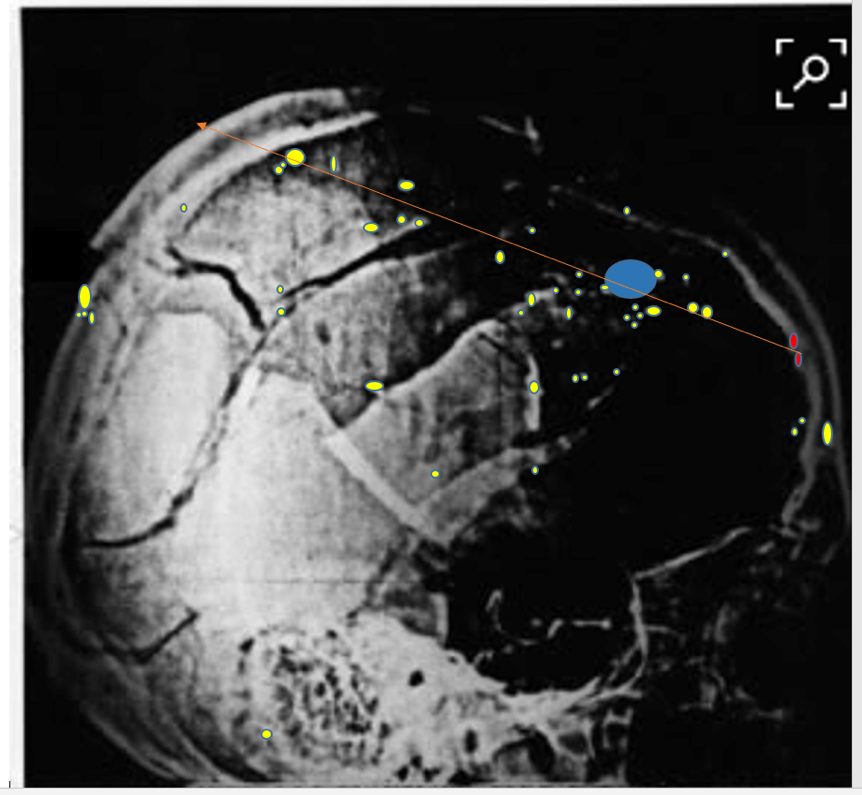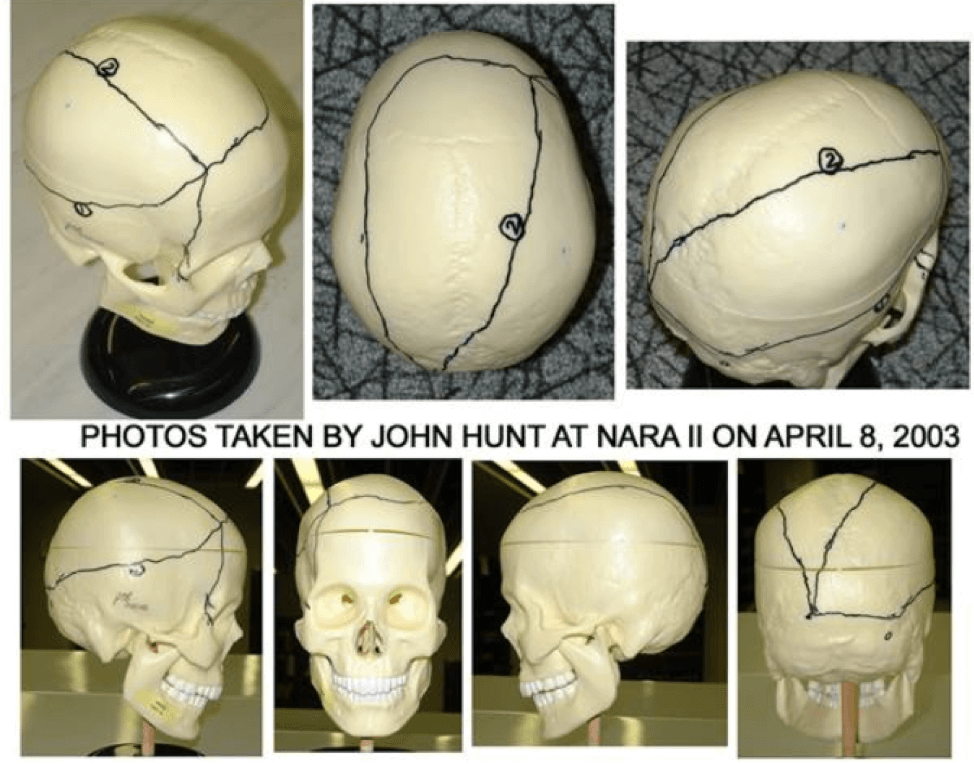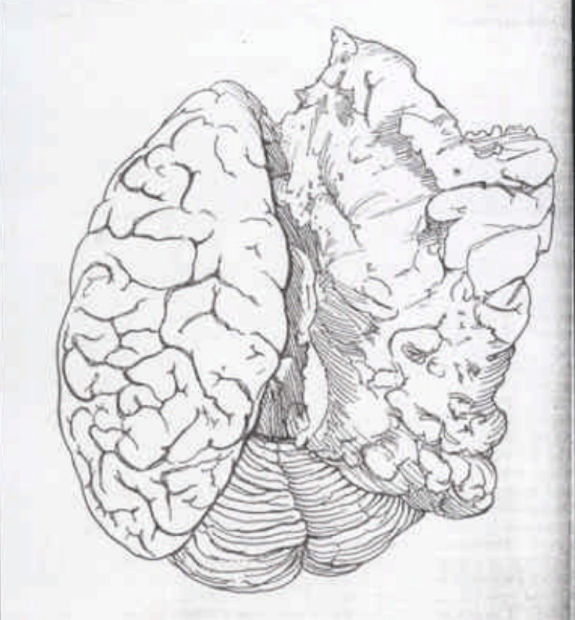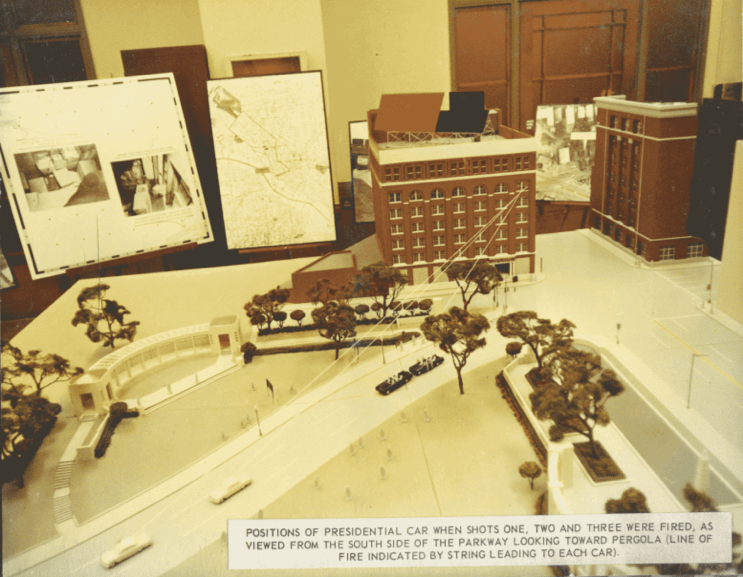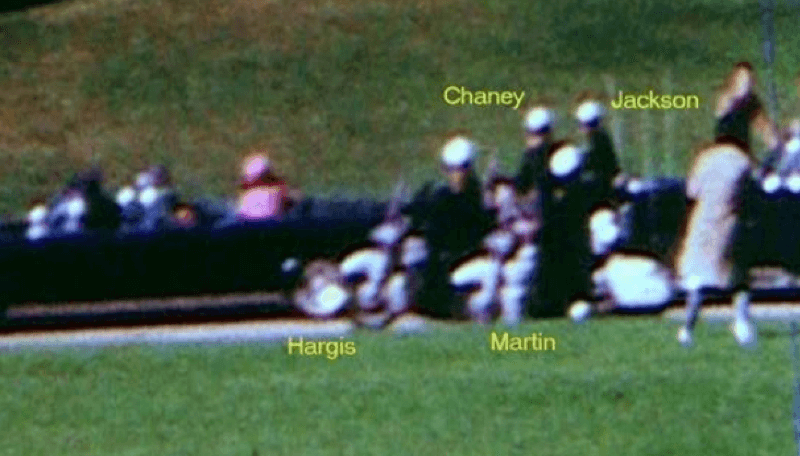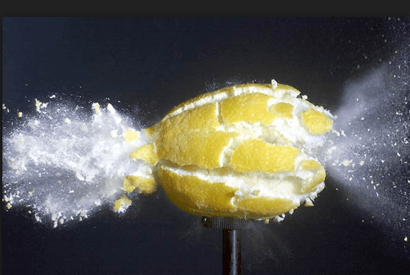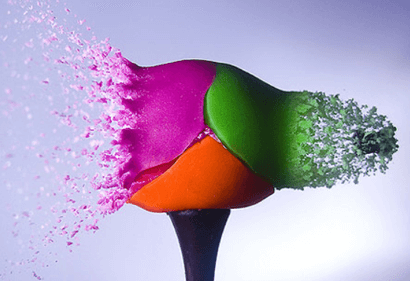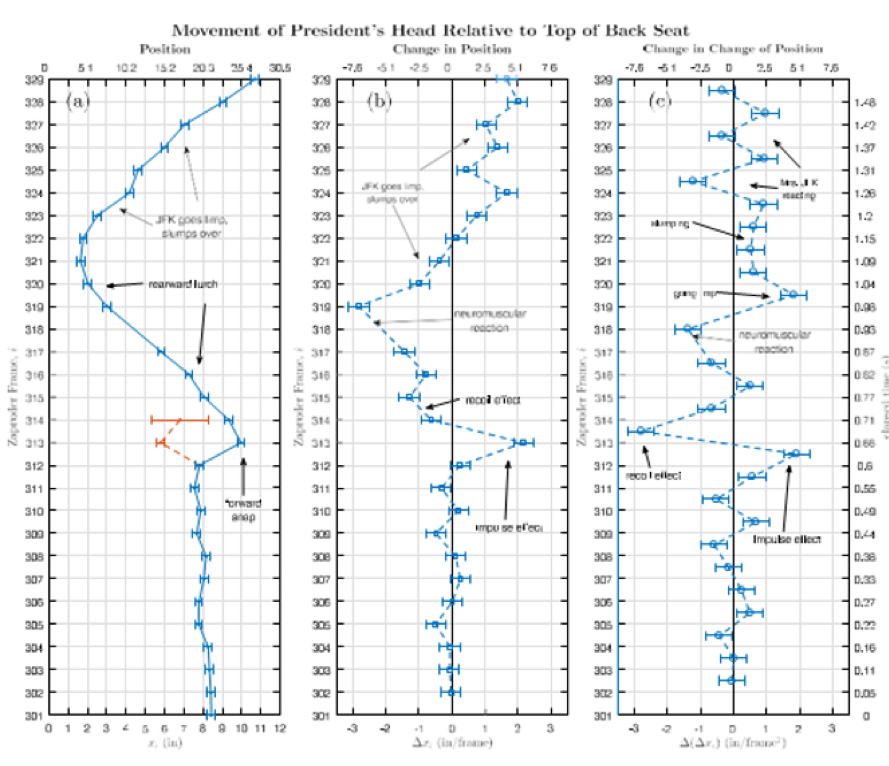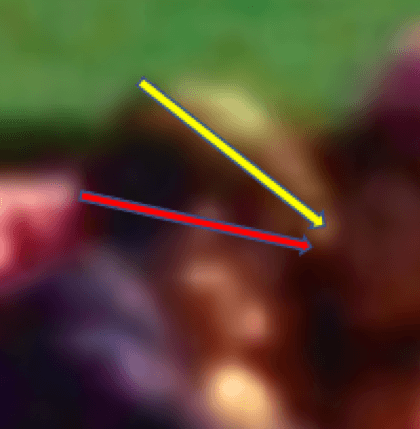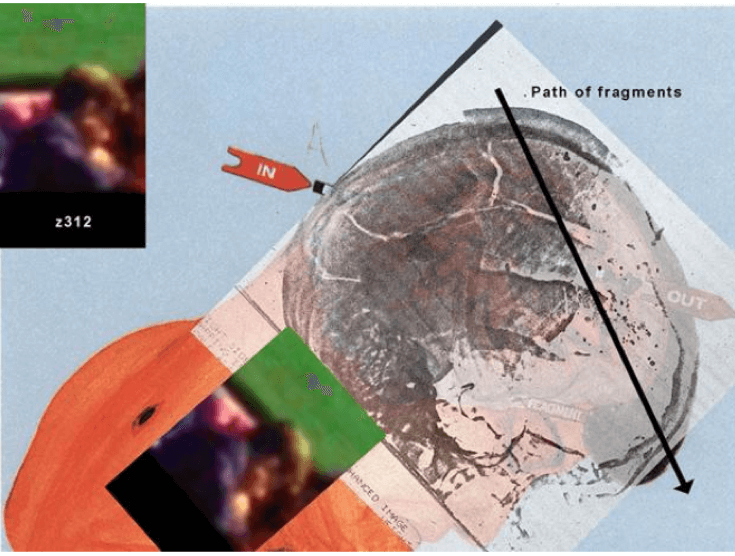“If there are enough parameters, it is possible to fit anything.”
--G. Paul Chambers, Ph.D. (physics)1
The source material for this review is as follows:
Nicholas R. Nalli*. “Gunshot-wound dynamics model for John F. Kennedy assassination.” Mechanics, Engineering, Physics. 30 Apr 2018, Volume 4, Issue 4.
*Corresponding author. I.M. Systems Group, Inc., 5825 University Research Court, College Park, MD 20740, USA. nallin@imsg.com.
https://www.heliyon.com/article/e00603
- From the news release: “The new findings do not necessarily rule out a broader conspiracy, but they do pour water on the theory that the fatal shot was fired from the grassy knoll.”2
- From Nalli’s abstract: “It is therefore found that the observed motions of President Kennedy in the film are physically consistent with a high-speed projectile impact from the rear of the motorcade, these resulting from an instantaneous forward impulse force, followed by delayed rearward recoil and neuromuscular forces.”
- From the closing paragraph: “But themodeling study (and underlying dynamics and conservation laws) presented in this paper, in corroboration of the autopsy findings, do imply that President Kennedy was not hit by a hypothesized gunshot from the front.”
First: A Logical Issue3
Nalli claims that his work is “consistent with” a (rearward) recoil of JFK’s head after a posterior shot. He then concludes that because his work is “consistent with” such a scenario, this means that any other scenario (e.g., a frontal shot) cannot be correct. On the other hand, G. Paul Chambers has shown that JFK’s head snap is fully consistent with a frontal shot.4 Can Chambers therefore justify reaching precisely the opposite conclusion, i.e., namely that recoil from a posterior shot cannot be correct?
These mutually exclusive models remind us of the Ptolemaic model, which described the earth as the stationary center of the universe. The planetary motions were modeled on clever epicycles. The model worked (well enough), and it was “consistent with” the data. But that does not mean that other models were excluded—as Copernicus (1473-1543) discovered. Nalli does not seem to recognize this logical issue. Moreover, he does not recognize that a shot from the rear might even be compatible with a second head shot (from the front).
David Lifton was an early pioneer in this controversy about the movement of JFK’s head, first meeting with a Nobel Laureate, the physicist Richard Feynman, and next with a British physicist, Dr. James Riddle at UCLA, who (like Chambers) concluded:
The motion of Kennedy’s body in frames 312-313 is totally inconsistent with the impact of a bullet from above and behind. Thus, the only reasonable conclusion consistent with the laws of physics is that the bullet was fired from a position forward and to the right of the President.5
The Nalli Assumptions
Nalli employs numerous key assumptions. If any one of these is seriously wrong, his model might well collapse. Here are 21 assumptions, many of which inevitably lead to miscalculations.
- NALLI: In his scenario, ejected debris only goes forward; none travels backward.
MANTIK: Nalli acknowledges that the autopsy skull defect measured 13 cm (5 inches), but he never explains why ejecta could not escape in other directions. The autopsy report (if it is accepted) described a defect that encompassed the frontal, parietal, and occipital skull. The Parkland doctors, almost uniformly, described a baseball-sized hole in the right occiput; so also did autopsy assistants, FBI observers, and the individual6 who developed autopsy photographs. (See Addendum 1 below.) If some ejecta went backwards, Nalli’s thesis is in serious trouble—after all, less momentum would then be available to drive the head backwards. Furthermore, many witnesses—in Dealey Plaza, as well as early observers of the Z-film—recalled such rearward-flying debris. One of these was Charles Brehm: “That which was a portion of the President’s skull went flying slightly to the rear of the President’s car and directly to its left.”7 Clint Hill noticed that there “…was blood and bits of brain all over the entire rear portion of the car.” Hill added that he himself had been covered with blood and brain tissue. Moreover, the evidence is not all from eyewitnesses; Josiah Thompson was the first to point out debris visible on the limousine trunk, as seen in the Nix film.8 Nalli (perhaps innocently) ignores all this rearward going momentum.
- NALLI: He estimates that the projected area (A) of the bullet (as it struck the skull) was merely its cross-sectional area.
MANTIK: Milicent Cranor9 points out, however, that no such estimation is required—after all, the autopsy report plainly states the actual size of the entry hole as 6 x 15 mm,10 which is obviously much larger (by more than a factor of two) than the bullet’s cross-sectional area. She further quotes Nalli, who states that all the pertinent drag forces (on the bullet)—are directly proportional to the projected area of the bullet. Therefore, Nalli’s calculations for the drag force (Fd) are wrong by at least a factor of two. In addition, such a tangential strike would deliver a greater impulse to the head, making it more difficult for Nalli’s forward ejecta to reverse the resulting (additional) forward momentum of JFK’s head. Cranor concludes:
The elliptical shape of the long entrance wound indicates a sideways or tangential hit (the two are different but have much in common). This would mean the bullet was in contact with the bone in front of it longer than it would have been in a nose-on hit.
And the longer bullet and bone are in contact, the more energy is imparted to the bone—and, in some circumstances, the more the head moves, until the bone in front of it detaches completely. According to Capt. Philip Dodge, tangential strikes can actually knock a person down.11
- NALLI: In his Figure 3, he plots the drag force (Fd) as a function of tissue depth (δx). Four curves are shown, each with a different value of the exit wound diameter (de).
MANTIK: Unfortunately, he never shows similar curves for different values of the entrance diameter, which he incorrectly estimates to be the cross-sectional area (A) of the bullet.
- NALLI: In his Figure 4, he plots the impulse (Jx) as a function of tissue depth, for four different values of the exit wound diameter (de).
MANTIK: However, the impulse force is directly proportional to the projected area (A) of the incident bullet, which means that the entrance wound diameter (A) is also critical. Unfortunately, he merely estimates that A is the cross-sectional area of the bullet—even though the pathologists described it as 6 x 15 mm. His Figure 4 therefore examines only a small fraction of the universe of possibilities; he should have used either the correct value of A, or some reasonable range, instead of estimating that A was merely the cross-sectional area of the bullet.
- NALLI: In his Figure 4, he plots the velocity of the bullet at depth (vx) for four different values of the exit wound diameter (de).
MANTIK: Unfortunately for Nalli, according to his equation 23, the velocity also depends on the projected area (A) of the bullet, but he again merely estimates that A is the cross-sectional area of the bullet, rather than the 6 x 15 mm stated in the autopsy report.
So, this graph also needs some serious amendments.
- NALLI: He sees only a single head shot (said to be due to a Mannlicher-Carcano bullet).
MANTIK: The only intact bullet (the Magic Bullet) in the Warren Commission (WC) case was purportedly found on a Parkland Hospital stretcher. Its provenance has been thoroughly debunked by Josiah Thompson and Gary Aguilar, M.D.12 John Hunt has also noted the paradoxes evoked by its so-called arrival at the FBI laboratory in Washington, DC.13 Most likely, the Mannlicher-Carcano bullet is irrelevant to the JFK case, but it is the only bullet that Nalli considers.
There is even more: Dr. Randy Robertson, my radiology colleague, recently discovered the papers of James M. Young, M.D., at a Navy website. Young, a White House physician at the time, reports that one more bullet was found in the limousine.14 The WC did not report this, nor does Nalli recognize this bullet, although he may not have known about it.
- NALLI: “…the impulse force [sic] is modeled in the current paper by assuming a perfectly inelastic collision.”
MANTIK: During such an inelastic collision, by definition, the entire bullet must remain inside the target. Inconveniently for Nalli, the nose and tail of this same bullet were purportedly15 found inside the limousine—not inside of JFK’s head. Nalli is aware of these fragments, but he does not really address the conundrums that they pose. No one knows how much momentum was carried away by these miscreant limousine fragments—or by the middle portion of this bullet—because this middle section was never recovered.16 Since Nalli never considers the momentum of these three fragments in his calculations, a dark cloud is cast over his results.
- NALLI: His “…theoretical model calculations were performed for an idealized high-energy spherical projectile with the mass and speed of a Carcano bullet.”
MANTIK: Of course, the actual bullet (or bullets) remains unknown,17 and its spherical shape is only an approximation. In particular, if the 6.5 mm object on the AP skull X-ray represents a real metal fragment (that mysteriously sheared off and remained behind at the rear of the skull), then that bullet fractured at entry (which Nalli concedes) and was never round at any point inside the skull.
- NALLI: The cratering process identifies the exit wound—and therefore the direction of the exiting projectile.
MANTIK: The purported exit site is shown on the left below (Figure 1), from WC Exhibit 388, as produced by H.A. Rydberg18 under the direction of JFK autopsy pathologist Dr. James Humes. Frame 313 of the Zapruder film (Z-313) is on the right. Nalli displays neither of these images. Nalli’s streaking debris can be faintly seen here in Z-313, going upward and forward. (He describes four particles.)
Figures 1A and 1B. On the left is the WC sketch. On the right is Z-313. The usefulness of beveling (to pinpoint entrance or exit sites) has now been roundly criticized. It is no longer considered definitive. Nowhere does Nalli acknowledge this.19 It is not certain that he was aware of this rather new state of knowledge.
- NALLI: Perfect inelasticity is assumed, i.e., the bullet does not exit from the skull: “As a final note, all these calculations have treated the head as a ballistic pendulum.”
MANTIK: Unfortunately for Nalli, if the nose and tail of the bullet were found inside the limousine (as the WC reported), and the middle portion has disappeared, then his ballistic model is broken. For the classical ballistic pendulum (where nothing exits), such a broken rule might well destroy his case.20
- NALLI: The parameter a, used to calculate the bullet speed at depth (Equation 18),is a projectile nose-shape parameter that ranges between ≈1.2 and 1.9.
MANTIK: This value contains an alarmingly large range. In Nalli’s Figure 3, he presents the drag force for several values of de (the effective exit diameter of the deformed bullet—see Nalli’s Table 2). Nalli’s Figure 4 displays the bullet speed at tissue depth (vx), but no variation of a is demonstrated, thus concealing a great deal of uncertainty. MATLAB could easily have plotted this for him (for different values of a).
- NALLI: The bullet was broken into at least three fragments.
MANTIK: This presumably (Nalli never clarifies this) includes the 6.5 mm “fragment,” located inside JFK’s right orbit as seen on the AP X-ray—but never explicitly cited by Nalli21—as well as the nose and tail of this same bullet. Nalli also overlooks the 40-odd fragments still visible on the skull X-rays. Figure 2 is my meticulous 3D localization of these fragments, with a schematic attempt at relative sizes. This work was performed at the National Archives, using the extant JFK X-rays. The blue ellipse (not its actual shape) represents a fuzzy cloud of ill-defined metallic debris, quite unlike that typically seen from a full metal-jacketed bullet. (See Addendum 2 below for images of typical fragments from a metal-jacketed bullet.) The thin orange arrow (in Figure 2) represents the approximate trail of particles. I shall return to this trail later, as it is grossly inconsistent with Nalli’s bullet trajectory.
Figure 2. My localization (in yellow) of tiny metal fragments on JFK’s lateral X-ray. The blue ellipse represents a fuzzy cloud of metallic debris. The red ellipses represent mysterious objectsthat appear on the reproductions by the House Select Committee on Assassinations. - NALLI: The bullet exited at the right coronal suture [somewhat anterior to the exit site shown in WC Exhibit 388)].
MANTIK: Nalli thereby ignores the multiple bullet fragments seen on the X-rays (Figure 2) that lie far anterior—and far inferior—to his chosen exit site. He also ignores the single metal fragment in the left hemisphere, easily visible on most extant images of the AP skull X-ray (but not identified here).22 Most of these fragments lie in the anterior portion of the skull, which suggests a frontal bullet. For so many tiny fragments to fly so far forward from a posterior entry would be odd indeed. Furthermore, the largest fragment in the trail is near the back of the head, whereas it would be expected to fly the farthest from the entry, and therefore lie nearer the front of the head.
- NALLI: JFK’s hat size was average (7 3/8), but then (paradoxically) he assumes that JFK’s intact brain weighed 2100 grams [sic].
MANTIK: Wikipedia reports that male brain sizes lie between 1250 and 1500 cubic centimeters.23 There is, however, substantial variation between individuals; one study of 46 adults, aged 22-49 years and of mainly European descent, found an average brain volume of 1273.6 cubic centimeters for men, with a range of 1052.9 to 1498.5 cubic centimeters.24 Based on Nalli’s estimate of 2100 grams, JFK’s brain size lies extraordinarily far outside the normal range.25 As an extreme example, Oliver Cromwell’s brain was well over 2000 grams, possibly the largest ever recorded.26 Cyril Wecht tells me that he has performed over 50,000 autopsies, but has never encountered a brain anywhere near that large. Nalli here faces a classic choice between Scylla and Charybdis: either he must admit that the brain weight in the autopsy is wrong27 or he is stuck with too little dispensable brain to achieve his jet effect.
- NALLI: He claims that JFK had only a single large wound—which was on the right front.
MANTIK: The autopsy report disagrees with a single right frontal defect; on the contrary, it describes a 13 cm defect (a number quoted by Nalli) that included the frontal, parietal, and occipital regions. The autopsy notes of pathologist J. Thornton Boswell suggest that the defect was even larger, i.e., 17 cm (Figure 3). Furthermore, numerous Parkland physicians reported a large right occipital defect. See the recent documentary film, “The Parkland Doctors,”28 for their essentially unanimous—and very troubling recollections.29 Nalli might find the doctors’ comments exceptionally disconcerting, but he never mentions these professional eyewitnesses. Figure 3 is Boswell’s depiction of the huge skull defect at the autopsy. The line at the vertex (#2) represents a scalp laceration. In other words, bone was missing over most of the upper skull, which raises profound questions about why the debris should only go forward (as Nalli claims). Furthermore, Dino Brugioni, who saw an early version of the Z-film, reported that debris surrounded JFK’s head, and did not merely travel forward. (See further discussion of Brugioni below.) The autopsy X-rays also confirm large areas of missing skull, even over the occiput, as I have extensively discussed in Reference 8.
Figure 3. Boswell’s marks on a skull as photographed at the National Archives. He prepared this for the ARRB to depict JFK’s skull at the autopsy. Line #2 represents a scalp laceration. Most of the upper skull is missing, which Nalli never tells us. - NALLI: He admits that the mass of the forward “exhaust jet” (i.e., the ejected debris) is not known, but he estimates it as 20 ±10% of the total brain mass.
MANTIK: The problem here is that the photographs of the brain show rather little missing brain tissue. I have viewed these at the National Archives. Nalli never refers to these photographs—or even to the public sketch from the House Select Committee on Assassinations (HSCA). Figure 4 is a reasonable portrayal of the photographs (which I have seen at the Archives). This image is grossly inconsistent with Humes’s statement: “Two thirds of the right cerebrum had been blown away.”30 Furthermore, the exact masses of the ejecta are manifestly critical to Nalli’s calculations. Therefore, his explicit confession of ignorance on this point is quite disturbing.
Figure 4. JFK’s (purported) brain shows little missing tissue. This is the sketch by Ida Dox for the HSCA. This brain was likely present at the second examination, i.e., not JFK’s brain. - NALLI: His pièce de résistance is his Figure 7, which is based on his Equation 27. In this figure he demonstrates that JFK’s head displacement is always backward (as shown by the negative signs in his figure), no matter the angle of the ejecta, and no matter their masses.
MANTIK: But, of course, if the presumed scenario can only yield a leftward (backwards) displacement of the head, one should not be too surprised to obtain a backward displacement of the head. Nalli should clearly note (but fails to do so unambiguously) that these measurements only apply to the Center of Mass (CM) system, i.e., the perspective of the moving limousine. He notes (again unclearly) that “… this calculated recoil displacement can be translated to the observed changes of position in the Zapruder Film by re-adding the initial velocity.” Unfortunately, he never does this simple addition for the edification of his reader, nor does he take time to explain exactly what this means.
- NALLI: He argues that a “real” [sic] force caused JFK’s head snap, and that without it JFK would simply have “…succumbed to gravity” and fallen forward or sideways. He claims that the “anomalous forward impulse” at Z-313 is not observed on any other limousine occupant.
MANTIK: We might ask Nalli about Kellerman’s dramatic backward head snap (and subsequent prompt forward snap)—as seen in multiple Dealey Plaza films—immediately prior to JFK’s head snap. If JFK’s movement requires a “real force,” why is Kellerman exempt? (Kellerman sat in the right front seat.) Kellerman’s movement in the Nix film can be seen here:31
http://assassinationofjfk.net/wp-content/uploads/2018/05/Nix.gif
The corresponding animation from the Z-film is here:
http://assassinationofjfk.net/wp-content/uploads/2018/05/Zapruder.gif
And here is the Muchmore film:
http://assassinationofjfk.net/wp-content/uploads/2018/05/Muchmore.gif
In each of these films, Kellerman clearly moves rather dramatically, yet Nalli insists that JFK is the only person who moves.
- NALLI: JFK was hit in the head at Z-312.
MANTIK: Nalli thereby ignores a legion of witnesses to a head shot well after Z-313.32 He also ignores WC survey data,33 corroborating WC documents, WC sketches of shot locations on Elm St., and the prompt WC re-enactments on Elm St., all of which are consistent with a shot well after Z-313.34 Figure 5 is taken from the WC files, and clearly shows a shot well after Z-313.35 In Reference 8 (p. 56) I display corroborating Secret Service photographs that show the limousine positions for each of these three shots.36 Such a late shot, of course, raises the specter of another shooter.
Figure 5. WC exhibit, prepared by the FBI, showing a shot (first limousine on the left)well after Z-313 but ignored by Nalli. The next nearest shot(second limousine from the left) here is at Z-313. - NALLI: He tacitly assumes that the Z-film is authentic.37 Likewise, he assumes that the streaking debris in Z-313 is authentic.
MANTIK: These streaks are central to Nalli’s calculations of recoil momentum. See References 3 and 6 below for detailed analyses of Z-film authenticity.38 The bizarre issues raised by this streaking debris are discussed below.
- NALLI: The Mannlicher-Carcano was the assassination weapon.
MANTIK: Nalli does not recognize the evidence-based arguments that the Mannlicher-Carcano is likely irrelevant to the case. Almost certainly Oswald did not fire a weapon that day, and it is dubious that he owned the Mannlicher-Carcano. The truly diverse arguments for this conclusion are dazzling and overpowering.39
Robert Frazier, the FBI ballistics expert, admitted they did not swab the barrel of the weapon to determine if it had been fired that day. Lyndal Shaneyfelt of the FBI added that he could not identify the weapon from the photograph in which Oswald held it. Even Howard Brennan, who supposedly saw Oswald in the sixth-floor window, admitted that he never saw a rifle discharge or flash—and that he never saw a scope (the weapon in the Archives has a scope40). Furthermore, no one ever identified it as the weapon supposedly stored in the Paine garage. Finally, between May 8, 1959, and November 22, 1963, despite diligent efforts by the FBI, no evidence was ever unearthed to show that Oswald fired a weapon during those 1,600+ days.41 Moreover, Marine Colonel Allison Folsom,42 testifying before the WC, characterized Oswald (while he was in the Marines and using a Marine-issued M-1) as "a rather poor shot." Yet on November 22, 1963, using a far inferior weapon, he was supposedly perfect.
Nine Nalli Omissions
- Dr. Luis Alvarez, who Nalli frequently refers to, persisted in his experiments until he got the result he wanted.43 Even worse, he failed to disclose what he had done. This embarrassing gaffe was finally revealed by Josiah Thompson during Cyril Wecht’s “Passing the Torch” conference in Pittsburgh during October 2013.44 45 It should also be emphasized that Alvarez only got his result (of a jet effect) by using a soft-nosed bullet. A Mannlicher-Carcano bullet never produced a consistent jet effect.46 Nalli fails to disclose this critical evidence. In fact, Nalli’s next step should be to demonstrate the jet effect with an intact Mannlicher-Carcano bullet (or to hire someone for the job).
- No Dealey Plaza witness—or any early viewer of the Z-film—reported a JFK head snap. Instead, these witnesses repeatedly recalled JFK slouching forward.
- Nalli does not cite the rearward going debris seen by surveyors (in individual magnified Z-film frames) during their prompt re-enactment on Elm Street.47
- Nalli does not cite the Dealey Plaza witnesses who saw debris slowly rising 6-8 feet in theair above and around JFK.48 Jackie Kennedy and William Manchester also saw slow-moving fragments. Manchester should know—after all, he had watched the Z-film seventy-five times.
- Nalli seems unaware (which may be excusable) of the recollections of Dino Brugioni, who saw an early, and quite different, Z-film.50 Brugioni observed debris surrounding JFK’s head—not just going forward, as Nalli assumes. This is of course consistent with Nalli’s statement that the kinetic energy is “…propagated radially outward [emphasis added] in the form of an expanding pressure wave, resulting in a rupture and explosion of the skull.”51 Furthermore, Nalli may not be aware that Brugioni was quite certain that the extant Z-film is different from the one he saw.52 In particular, Nalli only sees these forward flying particles in 2-3 frames at most, whereas Brugioni recalled seeing them in many frames. So also did the Dealey Plaza surveyors. The same is true for the debris in Alvarez’s experiment.53
- Nalli omits the observations of Hargis (a motorcyclist at the left rear), who was struck so hard by debris that he thought he had been hit:
Then I felt something hit me. It could have been concrete or something, but I thought at first I might have been hit.54
A second motorcyclist was also hit—Billy Joe Martin, who also rode at the left rear.55 Their positions in the motorcade are shown in Figure 6. It is surely quite odd that the two motorcyclists at the right rear (Chaney and Jackson) did not report being hit. Nalli tells us none of this, but perhaps he did not know.
Figure 6. Positions of the motorcycle men, as seen in the Nix film; this image was supplied by David Josephs. Chaney and Jackson were apparently not struck by debris, but Hargis and Martin were. This (rearward-flying) debris might well have carried away a significant fraction of ejected momentum, so its omission by Nalli is critical. Also recall that Hargis and Martin were riding at the left rear, while Nalli’s ejecta derive from the right front—exiting at veryhigh speeds (he claims)—so it is unlikely that Hargis simply encountered these same ejecta as he rode forward—even though the wind was blowing toward the limousine. Moreover, if the wind was blowing debris (ejected from the right front) backwards toward the limousine, why then were the motorcyclists at the right rear not struck by debris, while both of those at the left rear had such vivid recollections of being hit?
- Although Nalli cites his business address as College Park, MD, and he acknowledges the assistance of the staff at National Archives II, he does not report a personal examination of the JFK artifacts at Archives II—which is in College Park, MD. On the other hand, I have viewed these artifacts on nine different days, initially with Cyril Wecht, M.D., J.D.56
- Nalli fails to tell his readers what happened when a posterior shot struck a skull in the WC scenario: the face of the skull was blown out. This shocking image was printed by the WC (Exhibits 861 and 862).57 That is clearly not what happened to JFK. So, how does Nalli explain this astonishing result?
- Nalli ignores the eyewitnesses—from Dealey Plaza, from Parkland, and from Bethesda. He does not display the JFK skull X-rays, which he mostly avoids. He even overlooks the WC data tables, re-enactments, and their sketches of shots on Elm St. The Z-film is his sole source for truth. The WC three-shot scenario (Figure 5 above) clearly shows a shot well after Z-313.58 The final shot appears at the bottom of the stairs, but Nalli seems unaware of this.
A Nalli Admission
- NALLI: Missed shots cannot be ruled out.
MANTIK: Nalli missed the bullet reported by James Young, M.D. Likewise, he does not mention the Belmont memo; written the evening of the assassination by assistant FBI director Alan Belmont, it states that a bullet was lodged behind Kennedy's ear (Joseph McBride, Into the Nightmare, p. 556).
Eight Questionable Statements by Nalli
- NALLI: The WC considered the question of conspiracy.
MANTIK: Hale Boggs, Majority Leader and former Warren Commissioner:
Hoover lied his eyes out to the Commission—on Oswald, on Ruby, on their friends, the bullets, the guns, you name it ...59
Judge Burt W. Griffin, former assistant counsel for the WC and judge of the Court of Common Pleas, Cuyahoga County, Ohio:
“I think the CIA and all the other investigative agencies, including the FBI, were totally dedicated to trying to find out if there was a conspiracy,” he said. “But they were also totally dedicated to concealing how they operated, and the CIA did not want us to know that they were trying to assassinate [Fidel] Castro.”60
W. David Slawson has been even more outspoken:
Slawson’s silence has ended once and for all. Half a century after the commission issued an 888-page final report that was supposed to convince the American people that the investigation had uncovered the truth about the president’s murder, Slawson has come to believe that the full truth is still not known. Now 83, he says he has been shocked by the recent, belated discovery of how much evidence was withheld from the commission—from him, specifically—by the CIA and other government agencies, and how that rewrites the history of the Kennedy assassination.61
William Walton, a friend of the Kennedys, speaking on behalf of RFK and Jacqueline Kennedy:
Perhaps there was only one assassin, but he did not act alone .... Dallas was the ideal location for such a crime.62
Richard Goodwin, former Deputy Assistant Secretary of State for Inter-American Affairs:
We know the CIA was involved, and the Mafia. We all know that.63
- NALLI: The recoil effect “… has been backed up by subsequent independent experimental studies.”
MANTIK: For the WC, Larry Sturdivan (one of Nalli’s consultants) shot ten skulls with the Mannlicher-Carcano at the Aberdeen Proving Grounds.64 All ten skulls moved in the direction of the bullet. (Did Sturdivan, as consultant to Nalli, fail to tell him about these skulls?) Oddly enough, Sturdivan thereby confirmed the (long-concealed) results of Alvarez, i.e., the jet effect is a unique event, which does not occur with the Mannlicher-Carcano bullet. Furthermore, the jet effect as an explanation for the head snap has been fully discredited in at least three other independent experiments performed by John Nichols, M.D., Ph.D., Arthur Snyder, Ph.D. and Doug DeSalles, M.D.65 In summary, if we were to count Sturdivan’s (10) disobedient skulls and Alvarez’s (singular) failure, this would total five independent confirmations (of no jet effect). Moreover, based on Lucien Haag’s more recent report, we now have six. He shot at fiberglass wrapped melons with 6.5 mm Carcano bullets and seemed to show a dramatic jet effect in sequences of colorful frames. But Haag was careful to parse his words—a jet effect was only obtained when he first exposed the soft lead cores of these bullets! On the contrary, when he used intact Carcano bullets, “…the melons…remained in place, and the entry and exit holes were small.”66 In summary, he obtained the same results as everyone else—intact Carcano bullets do not cause a jet effect.
- NALLI: John Connally (JBC) reacted at the same time as JFK. (JFK was apparently shot while behind the sign, i.e., before Z-224.)
MANTIK: This is misleading. JBC believed he had been hit shortly after JFK, between Z-231 and Z-234. (His wife chose Z-229 through Z-233.) Connally’s surgeons, Robert Shaw and Charles Gregory, believed it might have been as late as Z-236.67 JBC insisted that he heard the first shot, and only after that felt himself hit by the second one. Furthermore, he was certain that only JFK was hit by the first shot.
- NALLI: The development of high speed cameras has assisted our understanding of wound ballistics.
MANTIK: Indeed, it has. Such films routinely show both forward spatter and backspatter, but Nalli totally ignores the inevitable backspatter, as seen in Figure 7.68 For Nalli, there is only forward spatter—he never mentions backspatter—at all, let alone in the JFK case.
Further support for this conclusion derives from experiments on live pigs destined for slaughter. Bone particles were a feature of backspatter from close-range shots to their heads: “Contamination of nearby surfaces by bone fragments and bone-plus-bullet fragments, as well as other organic debris appears to be quite heavy.”69 Many Dealey Plaza witnesses saw debris flying backwards. If this had been due to backspatter, much of Nalli’s assumed forward momentum would have been cancelled out. These Dealey Plaza witnesses though were not seeing backspatter—they saw forward spatter, from a frontal bullet.
Figure 7. Backspatter is obvious here; it occurs in most similar shots. - NALLI: Three [sic] additional government investigations affirmed the WC’s basic findings.
MANTIK: On the contrary, the HSCA favored a “probable conspiracy.” The Assassination Records Review Board (ARRB) was neutral, as stated in their final report, which published no official conclusions or findings of fact. The ARRB merely cited the Congressional prohibition against reinvestigating the assassination. Nalli has merely misled us about this fundamental issue. Worse than that (for Nalli), the ARRB staff strongly suggested that two separate brain examinations had been conducted of two different brains on two different dates.70 That report was approved by Chief Counsel Jeremy Gunn and reported in the Washington Post. This conclusion likely explains the odd reported brain weight of 1500 grams. Furthermore, the ARRB learned that the autopsy photographs could not be matched to the pertinent camera/lens combination,71 and that Saundra Kay Spencer, the photographic technician who developed and printed JFK autopsy images at the Naval Photographic Center (NPC) in November 1963, testified to the ARRB that she saw a photograph with a hole of one to two inches on the back of JFK’s skull.72 Altogether, even though they were officially neutral, the ARRB reached four different sets of autopsy conclusions.73 Despite Nalli’s pleading for the WC, the commissioners would not have been pleased with these ARRB autopsy conclusions.
- NALLI: The WC offered “definitive evidence.”
MANTIK: Nalli conveniently overlooks the rather long list of criticisms that the HSCA levelled against the WC investigation. Also recall the comments above by Boggs, Griffin, Slawson, Walton, and Goodwin. Then there is Walt Brown’s The Warren Omission (1996), written by a Ph.D. in history, Harold Weisberg’s Never Again (1996), and the detailed review article by Aguilar and Cunningham.74 Moreover, historian Gerald McKnight provides an exhaustive guide to the antics of the WC.75 The army’s top ballistics expert in that era was Colonel Joseph R. Dolce; the army specifically sent him to the WC, but the agenda-driven Specter shrewdly ignored his answers. For example, Dolce insisted that two bullets had struck Connally.76 Dolce’s experience in government had led him to say that in “… conferences you cannot disagree too often … especially when you’re discussing bullets before three-and-four-star generals.” For their sympathy with the WC conclusions, Drs. Alfred G. Olivier and A. J. Dziemian of the Edgewood Army Arsenal were well received by the WC; on the other hand, when Dolce was eager to correct the wrong impression they had made, the WC ignored him.
- NALLI: He claims that no bullet fragments were recovered (except for two tiny ones by Humes).
MANTIK: He thereby ignores the independent recollections of James Jenkins, Dennis David, and Tom Robinson, all of whom saw bullet fragments (distinctly more than two tiny ones) while in the morgue that night. Others with similar recollections include Paul O’Connor, Floyd Riebe, Jerrol Custer, Edward Reed, John Stringer, and Captain John Stover77.
- NALLI: He posits a neuromuscular reaction as a further source for JFK’s rearward head snap.
MANTIK: This claim rests upon slim evidence, i.e., the movement of JFK’s head at about Z-318. If one is permitted to interpolate, then this latter event (according to Nalli) is more precisely located at Z-318.2. But Z-318 itself does not even contain an original data point (due to excessive image blurring). Furthermore, the graph of displacement (Nalli’s Figure 8a) shows a nearly uniform displacement between Z-316 and Z-319 (and includes only three data points); it is inexplicable how a force can be invoked during this interval of essentially uniform motion. Finally, after Nalli’s supposed neuromuscular reaction at Z-318, JFK’s head slows down (while going backward), whereas the neuromuscular reaction (according to Nalli) should accelerate the head (backward). Here are the pertinent Nalli Figures 8a, 8b, and 8c.78
Figure 8. Nalli’s graphs of position, “speed,” and “acceleration.” Gary Aguilar, M.D., and Cyril Wecht, M.D., J.D., have responded in detail to the neuromuscular speculation. Here is a quotation from their work.
There are numerous problems with this “neuromuscular” theory. With respect to the example of the alleged human victim in 1936, Robert Capa’s famous “Fallen Soldier,” it’s now widely believed that the photograph [to which Nalli apparently alludes] was likely not taken of a head shot victim in a war zone, where Mr. Capa claimed he’d taken it. Instead, it’s likely the photograph was staged, far from any battle action. But even if “Fallen Soldier” is valid, the image, like those of the goat, depicts reactions distinctly different than what we see when JFK is fatally struck.79
Aguilar also notes (in the same article) that neither the decorticate nor the decerebrate posture explains JFK’s head snap; if so, the neuromuscular reaction simply does not apply. Oddly enough, Larry Sturdivan invokes both of these postures—at different places in his work. It should be quite sufficient to emphasize that no expert in neuroscience has ever supported this bizarre neuromuscular theory.
Two Stubborn Paradoxes for Nalli
- Now what about those forward-streaking ejecta in the Z-film—the very ones that critically underlie Nalli’s momentum calculations?
- The two most obvious trajectories extrapolate back to the same point on JFK’s forehead/frontal bone.
- This same site is also the origin of the large bone fragment seen (and X-rayed) at the autopsy; according to Lawrence Angel this was frontal bone.
- This large bone fragment simply fell into the limousine—while the streaking fragments (supposedly) zoomed off at very high speeds.80 How can such wildly different behavior occur for bone fragments ejected from the same forehead site? And how exactly can all these fragments fit into this same limited forehead site—where no one at Parkland saw any defect? Nalli addresses none of these issues, even though he claims to see four solid flying fragments, which he explicitly interprets as skull fragments.
- Dealey Plaza witnesses—and early viewers of the Z-film—saw only fragments slowly moving in the air immediately around JFK.
- Witnesses saw fragments flying to the left rear—but not to the right front.
- Calculations show that the Z-313 ejecta could have flown 117 feet, whereas John Lattimer’s (experimental) fragments flew only 20-40 feet. The latter distance, of course, is more consistent with slower ejecta speeds. Furthermore, the documentary, “Inside the Target Car,” did not report such far flung fragments.81 On the contrary they only report nearby fragments.
- The relative absence of spatter behind JFK’s head is itself suspicious, as such spatter would be expected for either a shot from the front or from the rear.
- This final paradox is one of the most fundamental in the entire case, although it is seldom noted. The left image below is Z-312, essentially the moment of impact—per Nalli. Note JFK’s forward head tilt. For dramatic comparison, WC Exhibit 388 is shown again on the right.
Figures 9A and 9B. Z-312 is on the left, while the WC trajectory is on the right. The yellow arrow represents the metallic trail on the X-rays (assuming a posterior bullet), while the red arrow (on the left) identifies Nalli’s headshot, as prescribed by the WC. On the left, the red arrow identifies Nalli’s proposed single head shot, with the appropriate downward angle of 16° (taking into account the downward 3° slope of Elm St.). The entry site does not seem to matter to Nalli, so I have chosen the WC site, which is also shown in the image on the right. (The HSCA entry site lay 10 cm superior.) The yellow arrow represents the trail of metallic debris on the lateral skull X-rays—presumably deposited by this same bullet. The WC trajectory in Figure 9B—presumably championed by Nalli—stands in stark contrast to the red arrow in Figure 9A, i.e., the exit sites are quite different. In fact, Nalli’s trajectory might well blow out JFK’s forehead, which would have been obvious at Parkland (but such damage was not seen).
But the second (and even more profound) paradox is apparent in Figure 9A. Nalli’s bullet trajectory cannot reasonably deposit the metallic trail seen on the X-rays: the entry site is both too low and the angle is quite wrong. The HSCA entry site might be nearly superior enough, but then the bullet would exit through the top of the skull—well before depositing the anterior portion of the trail. However, the red arrow in 9A could work if JFK were sitting erect. Oddly enough, many witnesses recalled that JFK was sitting erect when hit.82 If that is true, though, then the Z-film does not reflect reality. To more clearly illustrate this confounding paradox, Figure 10 is a composite image.83 If any single image emasculates the WC verdict of one shot to the skull (as well as Nalli’s conclusions), then this is the one.
Figure 10. The lateral X-ray superimposed on Z-312, as composed by David Josephs.
Conclusions
Nalli runs into surprisingly many buzz-saws. If even one critical assumption is seriously wrong, his conclusion cannot stand. This review has demonstrated several such assumptions that clearly must be wrong. At the very least, the uncertainty in many of his parameters casts a strong shadow over the entire work. Nalli clearly favors the Zapruder film over the X-rays, but he never explains why. Furthermore, eyewitnesses—even the Parkland M.D.s—are persistently ignored. Although he cites Larry Sturdivan as a consultant, he does not cite Sturdivan’s shooting experiment, where 10 of 10 skulls flew forward—not backward. Nor does he recognize Sturdivan’s conclusion that the 6.5 mm object (on JFK’s AP X-ray) cannot represent a metal fragment. Without any comment, he accepts the Mannlicher-Carcano as the guilty weapon, and Z-312 as the critical moment. He resorts to inflating the mass of JFK’s brain—to nearly match Oliver Cromwell’s outsized brain (whose size appears unmatched in history—at least for home sapiens). He assumes that ejecta only flew forward—despite current knowledge that backspatter is typical, and despite visible evidence on the limousine trunk of rearward-going debris. Based on rather fragile reasoning, he merely assumes the masses of these ejecta. He mistakenly estimates the projected cross-sectional area of the bullet as it initially struck the skull, whereas the autopsy report states a much larger area. And these items are all fundamental to his calculations. For example, if some ejecta flew backward, his calculations cannot possibly be correct—and his model might well fail. (Since some brain likely flew backward, even less brain mass would then be available to fly forward and provide backward propulsion.)
Moreover, he commits a logical fallacy—just because his model works, he concludes that no other model can possibly be correct. Logically, however, just because one model is initially preferred, its challenger is not thereby finally proven wrong. After all, the history of science often illustrates battles between opposing models, where both (temporarily) explain the same data set. Most critically though, he assumes a scenario in which debris only flies forward which means that, in his calculations, the head can only lurch backwards. Well, in that case, it surely will go backwards.
Addendum 1: The Witnesses
 |
| Figure 11. What the witnesses saw at the right rear of JFK’s head. |
For higher resolution images of Figure 11, see Robert Groden, The Killing of a President (1993), pp. 86ff.
Addendum 2: Bullet Fragments
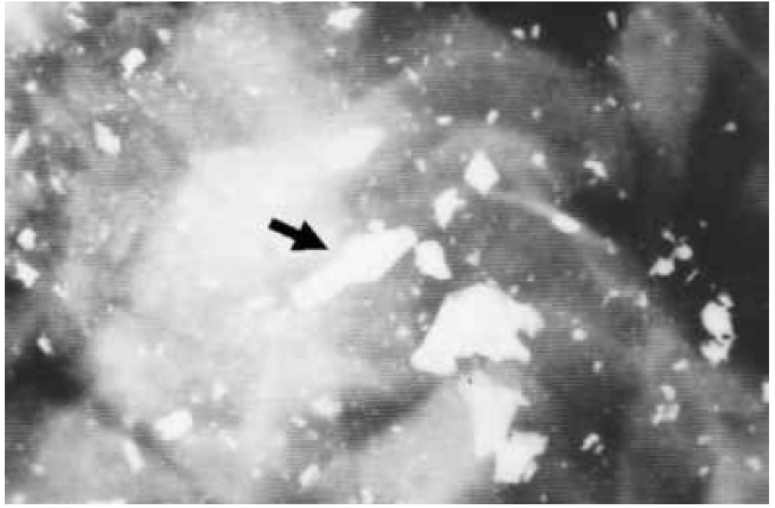 |
| Figure 12. X-ray of someone shot in the head with a Bronze-Point® bullet. The arrow-like "Bronze-Point," a hunting bullet, is identified by the arrow. |
Notice the very large fragments in Figure 12, quite unlike the JFK X-rays. Also note how numerous these fragments are—quite unlike the next image (of a metal-jacked bullet). Furthermore, none of these fragments have the remarkably fuzzy borders that most of the JFK fragments show.84
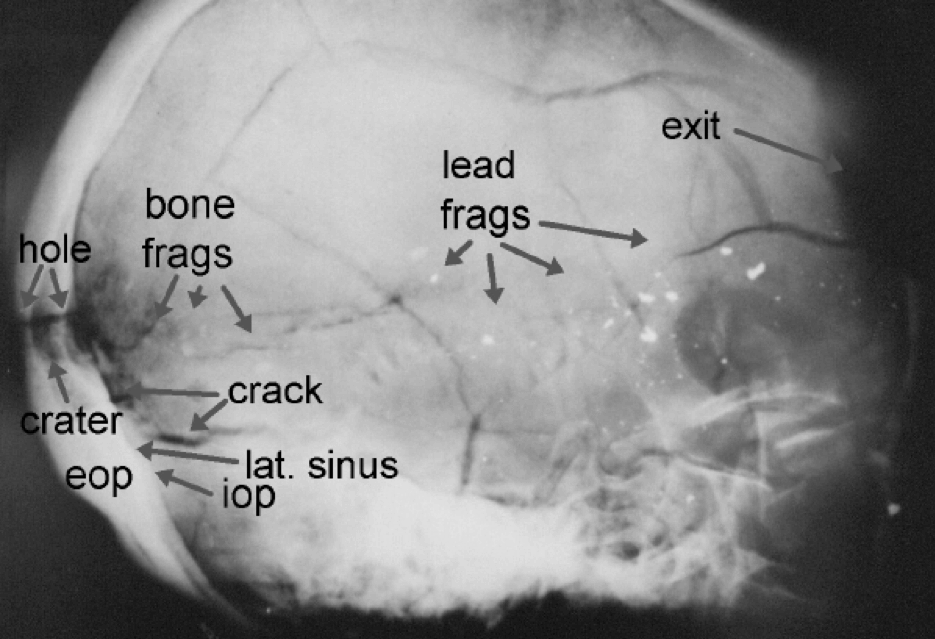 |
| Figure 13. This test skull was shot with a Mannlicher-Carcano (full metal-jacketed bullet) by the Biophysics Division at Edgewood Arsenal. |
In Figure 13, the bullet entered occipital bone superior to the site where Mr. Larry Sturdivan believes that JFK was struck (note the “hole”). But the fragment trail is relatively low on the skull (compared to JFK’s trail) and the fragments are larger than most of the JFK fragments. There are fewer fragments than in Figure 12 (a hunting bullet), but also notice how large most of these fragments are (compared to the JFK X-rays). Notice another striking feature: the bullet in Figure 13 breaks up some distance from its entrance site (as is typical of full metal-jacketed bullets), whereas the fragments in the JFK X-rays cluster toward the front, especially the smaller ones (which suggests a frontal entry). Furthermore, there is nothing in Figure 13 remotely like the fuzzy cloud in JFK’s X-rays. Such a fuzzy cloud (i.e., the blue ellipse in Figure 2), as well as fuzzy borders for many (but not all) JFK fragments, hint at a possible mercury bullet.
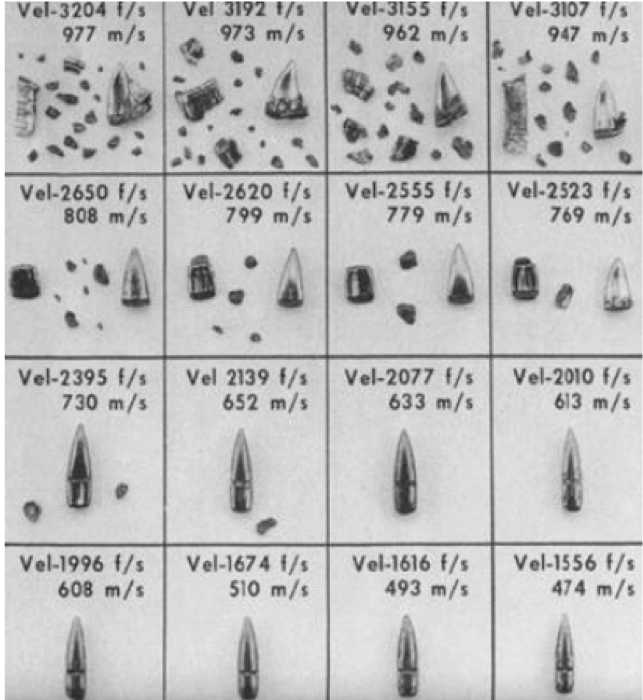 |
| Figure 14. These fragments were produced by a full metal-jacketed bullet. |
None of these examples in Figure 14 come close to matching the fragments in JFK’s X-rays.85
Addendum 3: Brain Weights
Figure 15 displays brain weight versus body weight for various species. The red line represents the brain size gifted to JFK by Nalli.86 David Josephs alerted me to this graph, although I first became aware of this concept in 1963 as a graduate student in biophysics. Note that this is a log-log graph. If a linear-linear graph had been used, the inexplicable size (2100 grams) cited by Nalli for JFK’s brain would have looked even more preposterous.
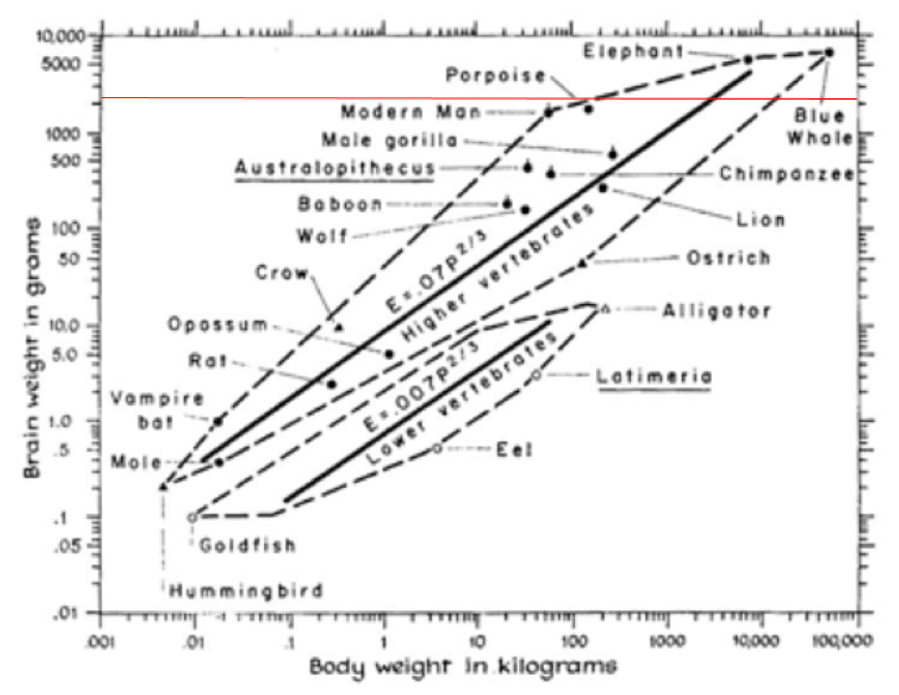 |
| Figure 15. Brain weights vs. body weight in various species. The red line identifies Nalli’s brain weight for JFK, which is far outside the normal range for homo sapiens. |
Acknowledgments
Fortunately, this essay was not orchestrated by a one-man band. Although I am not quite sure whether to thank him or to curse him, Jim DiEugenio incited me to undertake this review. Jeffrey Sundberg offered his usual astute clarifications, often weeding out ambiguous statements. Michael Chesser, M.D. has confirmed so many of my observations at the Archives that I hardly know how to express my gratitude. Gary Aguilar, M.D. and Cyril Wecht, M.D., J.D. contributed singular insights. Douglas DeSalles, M.D. reminded me of the many shooting experiments that failed to show a jet effect. Gregory Burnham contributed the movie clips about Kellerman. Walt Brown reminded me of Marine Colonel Allison Folsom. Paul Hoch, Ph.D., generously shared his unique historical perspective on the shooting experiments of Luis Alvarez. John Hunt supplied the skull photographs from the National Archives. Douglas Horne, the éminence grise of assassination researchers, as always, offered critical input. And David Josephs offered so many suggestions that he should be a co-author. Finally, I must thank Nicholas Nalli for reminding me of so many concepts that I once appreciated intuitively while on the physics faculty at the University of Michigan—and for thereby also resurrecting many happy memories of those long-gone days.
Notes
1 Head Shot: The Science Behind the JFK Assassination (2010), p. 128. Nalli lists twenty parameters in his Table 2. He also reports that the strength of cortical bone (σu) can be three times higher during high-speed trauma. This necessarily introduces a great deal of uncertainty into any calculations based upon this parameter. And, according to Nalli, the drag force (Fd) is directly proportional to σu, so any calculations of drag force are subject to this uncertainty—and Nalli has many of these calculations in his paper. According to Nalli, “…while uncertainties in parameters were accounted for as much as possible, this could not be done for a handful of them, especially bio-mechanical parameters (e.g., σu, U6, ρt, ρs and E).”
2 http://www.newsweek.com/jfk-assassination-conspiracy-theory-debunked-new-gunshot-study-902292.
3 Although the first draft of this review was completed soon after Nalli’s article appeared, I then got hopelessly sidetracked for many weeks while working in an underserved clinic in northern California—trying to help zillions of cancer patients with poor lifestyle choices. My apologies for this delay; it was due to a commitment I had made well before Nalli’s article appeared. NOTE: To avoid tedium, many sources are not cited here. Reference 8 includes most of these. June 18, 2018. DWM.
4 Chambers, Chapter 9. Nalli references Chambers’s book, but he does not comment on his conclusions. Chambers, also a physicist, supports a frontal head shot, and does not accept a jet effect.
5 David Lifton, Best Evidence (1980), p. 53.
6 I have personally interviewed several of these individuals, who tell a mutually consistent story.
7 Mark Lane, Rush to Judgment (1966), p. 56.
8 Josiah Thompson, Six Seconds in Dallas (1967), p. 99. Inspect the trunk in this image.
9 https://whowhatwhy.org/2018/05/31/scientist-neutralizes-jfks-back-and-to-the-left-or-does-he/.
10 This reported entrance wound diameter of 6 x 15 mm introduces yet one more paradox into the case: How can this bullet scape off a nearly round 6.5 mm fragment onto the back of the skull (as seen on the JFK AP X-ray) if it struck tangentially?
11 Journal of Neurosurgery 9 (1952), 472-483—as cited by Cranor.
12 https://history-matters.com/essays/frameup/EvenMoreMagical/EvenMoreMagical.htm.
13 http://www.jfklancer.com/hunt/mystery.html.
14 https://whowhatwhy.org/2017/10/06/navy-doctor-bullet-found-jfks-limousine-never-reported/.
15 Although this seems an unlikely scenario, the WC bequeathed it to us.
16 Nalli seems to accept the 6.5 mm fragment (on JFK’s AP skull X-ray) as authentic—even though his consultant (Larry Sturdivan) does not. Even if it is authentic, it cannot represent much of the middle portion, as it is extremely thin. See my peer-reviewed paper about this object at Reference 9.
17 These limousine fragments could not definitively be matched by neutron activation analysis to any other metal fragments in the case—nor to the Magic Bullet.
18 Rydberg has since expressed his misgivings about his sketch: http://assassinationofjfk.net/for-the-sake-of-historical-accuracy/.
19 From that memorable essay (Reference 5) by Gary Aguilar, M.D. and Kathy Cunningham, here is their footnote 352: “As observed by David Mantik, M.D., Ph.D. (personal communication), there are numerous cases from the scientific literature in which the documented beveling characteristics were the reverse of what might be expected from the known direction of wounding. While beveling may be a useful clue, it is far from Humes’ ‘100 times out of 100.’ [Dixon DS.”Keyhole lesions in gunshot wounds of the skull and direction of fire.”J Forensic Sci,1982; 27:555-66. Coe JI.”External beveling of entrance wounds by handguns.” Am J Forensic Med Pathol,1982; 3:215-9. Baik S, Uku JM, Sikirica M.”A case of external beveling with an entrance wound to the skull made by a small caliber rifle bullet.”Am J Forensic Med Pathol,1991; 12:334-6. Donohue ER, Kalelkar MB, Richmond JM, Teas SS.”Atypical gunshot wounds of entrance; an empirical study.”J Forensic Sci,1984; 29:379-88. Lantz PE.”An atypical, indeterminate-range, cranial gunshot wound of entrance resembling an exit wound.”Am J Forensic Med Pathol, 1994; 15 (1):5-9.]”
20 For an illustration of a ballistic pendulum, see Chambers’ useful sketch at p. 203.
21 Despite Nalli’s reliance on Sturdivan (he is, after all, one of Nalli’s consultants), Nalli never cites Sturdivan on the critical matter of the 6.5 mm object. Instead Nalli appears to accept it as an authentic metal fragment. But Sturdivan has stated the opposite in The JFK Myths (2005), p. 193: “No, I think it’s an artifact of some kind … [bullet] fragments could have been found anywhere but, wherever they were found, NONE (sic) would be disks 6.5-mm in diameter … Some have said it was a piece of the jacket, sheared off by the bone and left on the outside of the skull. I’ve never seen a perfectly round piece of bullet jacket in any wound….”
22 Michael Chesser, M.D. (neurologist), while recently at the National Archives, noted many tiny metallic fragments just inside the forehead bone (on JFK’s extant lateral skull X-rays). This location is grossly inconsistent with Nalli’s exit site. Chesser’s observations were made public well in advance of Nalli’s review, but Nalli was likely unaware of them. Chesser’s tiny fragments partially overlap the more inferior of the two red ellipses in Figure 2. Chesser also noted a hole in the forehead bone, possibly created by the same bullet that deposited these tiny fragments. Now if Chesser is correct—and it would be difficult for an impartial observer to avoid the conclusion—not only would this overt evidence for a frontal shot “pour water” on Nalli’s conclusions, but it would render his work quite irrelevant. Like me, Chesser was an expert witness at the November 2017 Mock Trial of Lee Harvey Oswald. See Reference 12 (slides 9-31) for Chesser’s own presentation.
23 https://en.wikipedia.org/wiki/Brain_size.
24 Allen, JS; Damasio H; Grabowski TJ (2002). “Normal neuroanatomical variation in the human brain: An MRI-volumetric study”. Am J Phys Anthropol. 118(4): 341-58. doi:10.1002/ajpa.10092.PMID12124914.
25 If true, JFK’s brain weighed 4.6 pounds, compared to the average brain of 3.0 pounds. The average head weight is 10-11 pounds: https://www.brainstuffshow.com/blogs/how-much-does-the-human-head-actually-weigh.htm. Nalli estimates JFK’s head as 10.3 pounds. See https://www.brainstuffshow.com/blogs/how-much-does-the-human-head-actually-weigh.htm. So, the average ratio of brain to head size is about 29%. Since JFK’s hat size was average (and his head size therefore was probably average, as Nalli agrees), his brain to head size in Nalli’s scenario (using Nalli’s numbers) becomes a fantastic 45% (2100 grams ÷ 4500 grams).
My cousin Steve agreed to submerge his head in a bucket of water; using Archimedes Principle, his head weight was 4250 grams.
26 https://www.scientificamerican.com/article/the-littlest-human-2006-06/. Was Cromwell blessed with especially potent NOTCH2NLS genes? Ironically, this article (about these genes) was posted online during the Mock Trial of Lee Harvey Oswald: https://www.biorxiv.org/content/biorxiv/early/2017/11/17/221226.full.pdf.
27 The listed brain weight (1500 grams) most likely describes the one at the second brain autopsy, i.e., the one shown in Figure 4 below (not JFK’s brain).
28 https://www.youtube.com/watch?v=AN6WXERsEKE.
29 This film was screened during the November 2017 Mock Trial of Oswald, where I appeared as an expert witness.
30 In JAMA, May 27, 1992—Vol 267, No. 20, p. 2798.
Humes here almost certainly described JFK’s actual brain, i.e., not the one shown in Figure 4. Humes, of course, was not the only one to report rather little residual brain. FBI agent Frank O’Neill, several autopsy assistants, and professional personnel at Parkland agreed: https://www.maryferrell.org/pages/ARRB_Medical_Testimony.html.
But we don’t need witnesses—we have optical density measurements that yield similar results for the large amount of missing brain: see David W. Mantik and Cyril H. Wecht, “Paradoxes of the JFK Assassination: The Brain Enigma”. Cf. https://archive.org/details/assassinationspr00jame.
31 Greg Burnham supplied these online images.
32 See Milicent Cranor’s brilliant summary of these witnesses to a shot after Z-313: https://web.archive.org/web/20110606195259/http:/spot.acorn.net/jfkplace/09/fp.back_issues/31st_Issue/jiggle.html. Also see my argument for such a late shot in Reference 1, p. 285. Then there is Clint Hill, who also recognized a shot well after Z-313: https://www.dailystar.co.uk/news/latest-news/604980/jfk-assassination-kennedy-clint-hill-witness-account-president-dallas. Clint Hill first placed his hand on the limousine 30 frames after Z-313. According to the FBI, his foot did not reach the bumper until Z-368; both feet reached at Z-381. Mary Moorman has often recalled hearing a shot well after her famous photograph, which supposedly captured the headshot. Finally, even Josiah Thompson, in his forthcoming book, Last Second in Dallas, now favors a late shot near Z-327.
33 The first survey plat of Dealey Plaza was by Robert H. West, Dallas County Surveyor, on November 26, 1963, just four days after the assassination. That data was obviously altered later to fit the single bullet theory. At the bottom of the next survey (December 5th, CE-585) is a note, “Revised 2-7-64,” which means that in February 1964 the last shot was still fixed near the concrete steps, well after Z-313. See Chuck Marler, “The JFK Assassination Re-enactment: Questioning the Warren Commission’s Evidence,” in Assassination Science (1998), ed. James Fetzer.
34 See reference 8 for a WC reconstruction (with photographs) that clearly display a shot well after Z-313.
35 https://kennedysandking.com/content/warren-commission-document-wcd-298-how-the-bureau-made-a-fourth-shot-beyond-z-313-disappear. This is an enlightening essay by David Josephs, which illuminates the nature of the earliest FBI conclusions. These still stand in stark contrast to those of the WC.
36 These SS photographs were initially published by Harold Weisberg in Whitewash II (1966), p. 248. David Josephs reminds us that CE875 is an album of SS photographs with the limousine at every station point on Elm St. at intervals of 0+25. No photograph was taken at 5+00 because the last shot was within 4 feet of this. But this site is well beyond Z-313, i.e., well past Zapruder’s pedestal, as is readily seen here: https://www.history-matters.com/archive/jfk/wc/wcvols/wh17/pdf/WH17_CE_875.pdf.
37 Nalli cites Vincent Bugliosi, who claimed that the Z-film was not necessary to reach the WC conclusions. I concur that the Z-film is not required to reach a conclusion—unfortunately for Nalli, though, that conclusion is rather one of conspiracy. My review of Bugliosi’s enormous book can be found online: https://www.assassinationscience.com/v5n1mantik.pdf. (So also is my review of his Divinity of Doubt.)While he once regaled me with his frustration over my review (for well over an hour), Bugliosi stated that I was the only reviewer who he had telephoned.
38 Here are some arguments for film alteration: (1) John Costella (Ph.D. in theoretical physics) has shown via mathematical algorithms that unrealistic distortions appear in the film, (2) some frames (e.g., Z-232) show physically impossible images, (3) odd inconsistencies exist among the Dealey Plaza films, (4) the debris hangs in the air for only about three frames, (5) the black geometric patch over the back of JFK’s head (flagrant on early generations of the film—as I have observed in two separate formats), (6) the two, totally compartmentalized Z-film events at the CIA on consecutive days that weekend, (7) witnesses uniformly reported that the limousine stopped, and (8) witnesses reported actions no longer seen in the Z-film (e.g., see the Preface in Reference 8).
See http://educationforum.ipbhost.com/topic/19952-new-proof-of-jfk-film-fakery-conclusive-evidence-experts-claim/ and http://assassinationofjfk.net/the-two-npic-zapruder-film-events-signposts-pointing-to-the-films-alteration/.
At the recent Mock Trial of Oswald, Alec Baldwin reported that even the Kennedy family accepts alteration of the Z-film. After all, Jackie was there.
39 The reader is referred to the exhaustive work by John Armstrong, Harvey and Lee. An easier approach is via James DiEugenio, Reclaiming Parkland (2013). Then there is David Josephs, who has also done heroic work on these issues: https://kennedysandking.com/john-f-kennedy-articles/oswald-on-november-22-1963.
40 https://en.wikipedia.org/wiki/John_F._Kennedy_assassination_rifle. Brennan failed to identify Oswald in a police lineup that day; for further discussion of Brennan’s erratic statements, see Gerald McKnight, Breach of Trust: How the Warren Commission Failed the Nation and Why (2005), pp. 109ff.
41 This is longer than US involvement in WW II—and even longer than Tiger Woods’s major tournament drought.
42 Warren Commission Hearings, Volume XIX, p. 17ff: https://www.maryferrell.org/showDoc.html?docId=1136#relPageId=35&tab=page.
43 Alvarez shot at coconuts, pineapples, and even at water-filled jugs—and he tried quite different bullets, until he happened upon a combination that finally yielded his long-desired jet effect. But that did not happen with the Mannlicher-Carcano bullet.
44 This was based on original documentation generously supplied by Paul Hoch, Ph.D., who was then Alvarez’s graduate student in physics.
45 http://www.patspeer.com/chapter16:newviewsonthesamescene.
46 I was in the audience (as a medical student) when Alvarez gave his lecture at Los Alamos, NM in 1975, where I received (and preserved) a pre-print of his paper.
47 Charles Breneman, who assisted surveyor Robert H. West, stated that he “…saw three frames of the Zapruder film which showed large blobs of blood and brain matter [emphasis added] flying from Kennedy’s head to the rear of the car” (Fort Worth Star Telegram, April 14, 1978).
48 Larry Sneed, No More Silence (1998), pp. 351-371.
49John Corry, The Manchester Affair (1967), p. 45.
50 Dino A. Brugioni (1921-2015) served as the Chief Information Officer at the National Photographic Interpretation Center (NPIC) for about two-and-a-half decades. He was the world’s foremost living expert on the U-2 and SR-71 aerial reconnaissance imagery, and on the Corona and early Keyhole satellite reconnaissance imagery.
51 In his excellent book, Hear No Evil (2010), pp. 351ff, Donald Thomas describes this as a Krönleinschuss effect, as it is called in forensic pathology. Nalli references Thomas, but does not quote his conclusion: “… we are compelled to conclude that the jet recoil theory is dubious at best.”
52 https://www.lewrockwell.com/2012/05/douglas-p-horne/the-two-npic-zapruder-film-events-signposts-pointing-to-the-filmsalteration/.
53 The American Journal of Physics, Volume 44, No. 9, September 1976; I have carefully examined the images in the original article.
54 http://mcadams.posc.mu.edu/hargis.htm.
Mr. MARTIN. Yes.
Mr. BALL. Did you notice any stains on your helmet?
Mr. MARTIN. Yes, sir; during the process of working traffic there, I noticed that there were blood stains on the windshield on my motor and then I pulled off my helmet and I noticed there were blood stains on the left side of my helmet.
Mr. BALL. To give a more accurate description of the left side, could you tell us about where it started with reference to the forehead?
Mr. MARTIN. It was just to the left—of what would be the center of my forehead—approximately halfway, about a quarter of the helmet had spots of blood on it.
Mr. BALL. And were there any other spots of any other material on the helmet there besides blood?
Mr. MARTIN.Yes, sir; there was other matter that looked like pieces of flesh.
Mr. BALL. What about your uniform?
Mr. MARTIN. There was blood and matter on my left shoulder of my uniform.
Mr. BALL. You pointed to a place in front of your shoulder, about the clavicle region?
Mr. MARTIN. Yes, sir.
Mr. BALL. Is that about where it was?
Mr. MARTIN. Yes.
Mr. BALL. On the front of your uniform and not on the side?
Mr. MARTIN. No, sir.
Mr. BALL. That would be left, was it?
Mr. MARTIN. Yes; on the left side.
Mr. BALL. And just below the level of the shoulder?
Mr. MARTIN. Yes, sir.
Mr. BALL. And what spots were there?
Mr. MARTIN. They were blood spots and other matter.
Mr. BALL. And what did you notice on your windshield?
Mr. MARTIN. There was blood and other matter on my windshield and also on the motor.
Mr. BALL. Was the blood noticeable—were there large splotches?
Mr. MARTIN. No; they weren’t large splotches, they were small—It was not very noticeable unless you looked at it.
Mr. BALL. Was the discoloration on your helmet noticeable?
Mr. MARTIN. Not too much—no—as a matter of fact, there were other people around there and two more officers there and they never noticed it.
Mr. BALL. At that time were you with Mr. Hargis?
Mr. MARTIN. No, sir; I don’t believe that he went to the hospital with us. I believe he stopped there at the scene of the shooting.
Mr. BALL. And did you ever see his helmet or his uniform or the windshield of his motorcycle?
Mr. MARTIN. No, sir—I never recall seeing him again until the next day.
Mr. BALL. Now, was this blood on the outside or the inside of your windshield?
Mr. MARTIN. It was on the outside of my windshield.
Mr. BALL. Was it on the right or left side?
Mr. MARTIN. It was on the outside of my windshield.
56 Reference 4.
57 https://www.history-matters.com/archive/jfk/wc/wcvols/wh17/html/WH_Vol17_0440b.htm.
58 This exhibit was supplied by David Josephs.
59 Bernard Fensterwald, Jr. and Michael Ewing, Coincidence or Conspiracy?, p. 96. The quote comes from an unnamed aide to Congressman Boggs. The book also quotes Bogg’s wife Lindy, through a colleague, as saying “He wished he had never been on it [the Commission] and wished he’d never signed it [the Report].”
60 http://www.toledoblade.com/MarilouJohanek/2013/11/17/Retired-Ohio-judge-investigated-Ruby-s-slaying-of-Oswald.html.
61 https://www.politico.com/magazine/story/2015/02/warren-commission-jfk-investigators-114812.
62 https://www.maryferrell.org/pages/JFK_Assassination_Quotes_by_Government_Officials.html.
63 David Talbot, Brothers, p. 303. Author interview.
64 http://mcadams.posc.mu.edu/russ/jfkinfo/hscastur.htm. Also see Larry M. Sturdivan, JFK Myths (2005), p. 163, which displays the 10 (of 10) skulls that failed to show the jet effect. Although the resolution in these images is low, backspatter might be faintly visible.
65 http://www.jfklancer.com/galanor/jet_effect_text.html. See Arthur and Margaret Snyder, “Case Still Open: Skepticism and the Assassination of JFK” in Skeptic Magazine, Volume 6, Number 4. (Arthur is a SLAC physicist.) DeSalles (e-mail to me) notes that his multiple attempts, with full metal-jacketed bullets through melons wrapped with either duct tape or casting plaster, failed to show convincing evidence of a jet effect. He has offered $100 to anyone who can demonstrate a jet effect (with the proper bullet). DeSalles has gifted me with videotapes of his experiments, which I have viewed closely. John Nichol’s experiments are reported here: https://www.baylor.edu/content/services/document.php/185131.pdf.
66 “President Kennedy’s Fatal Head Wound and his Rearward Head ‘Snap,’” AFTE Journal, Volume 46, Number 4, Fall 2014, pp. 279-289; see Figure 8.
67 Thompson, Six Seconds in Dallas (1967), pp. 70ff.
68 https://www.google.com/search?q=exploding+bullets&rls=com.microsoft:en-us:IE-SearchBox&tbm=isch&tbo=u&source=univ&sa=X&ei=o-YoUrqzOYWSiAKtjYDoAQ&ved=0CEMQsAQ&biw=1920&bih=1048#facrc=_&imgrc=w_ukJR22ViotQM.
Nalli never acknowledges backspatter, although it might well offset much of his proposed forward momenta. An authentic human skull would be a superior example for Figure 7, but my internet trolling failed to discover such an example, although this image is memorable: https://www.nytimes.com/2018/02/01/world/asia/vietnam-execution-photo.html.
69 “These materials were examined by scanning electron microscopy/energy-dispersive X-ray analysis. Calcium-phosphorous (bone) particles were detected on the 9-mm Smith & Wesson pistol, on two casings found at the scene, and on one of the revolvers. Two of the calcium-phosphorous particles on the casings had associated bullet fragments.” J Forensic Sci. 1991 Nov; 36 (6):1745-52. https://www.ncbi.nlm.nih.gov/pubmed/1770342?dopt=Abstract.
70 Reference 2. Douglas P. Horne , “Evidence of a Government Cover-Up: Two Different Brain Specimens in President Kennedy’s Autopsy”.
71 Reference 5, Section V.
72 Reference 5, Section V.
73 Reference 6, Chapter 11.
74 Reference 5.
75 The most infamous quote from the WC was uttered by attorney Wesley Liebeler: “The best evidence that Oswald could fire his weapon as fast as he did and hit the target is the fact that he did so.”
76 Breach of Trust, pp. 186ff. This book was published by the University Press of Kansas.
77 http://aarclibrary.org/publib/jfk/wc/wcvols/wh17/pdf/WH17_CE_397.pdf. Stover was the Commanding Officer of the National Naval Medical School at Bethesda that night.
78 Paul Hoch, Ph.D. (e-mail to me) raises several issues about these graphs: (1) Did Nalli repeat the measurements? (2) Nalli states that he “re-plotted” the data, whereas re-measurement would have been expected. (3) When Nalli refers to “digitization of the original image,” does he mean the Z-film—or rather the graph in Six Seconds in Dallas, p. 91? (4) Nalli’s Figure 8 has error bars; they all appear the same size; “I wonder where he got them.” Thompson has since disavowed the initial forward motion (due to blur artifact), although Nalli does not tell us that: http://jfkcountercoup.blogspot.com/2013/10/wecht-center-symposium-on-jfk.html.
Here is my response to Hoch. Comparison of Nalli’s graphs with Thompson’s graphs suggests that Nalli performed his own measurements even though he ambiguously states, “The data have been re-plotted [emphasis added] by the current author….” To further confuse us, Nalli’s legend for Figure 8 states that the position measurements are those of Thompson, so the answer is still in some doubt. Given the sequential steps involved in Nalli’s three successive graphs, I would expect the uncertainty to increase successively from graph to graph. Close inspection suggests that is likely true, but the error bars remain oddly uniform within each graph. And certainly, the blurring in some frames (e.g., Z-318) must increase the calculated uncertainty at that point, yet that is not seen in the third graph at Z-318—just where the neuromuscular reaction supposedly begins.
79 https://statick2k-5f2f.kxcdn.com/images/pdf/AguilarWechtAFTA2015.pdf. For more details from Aguilar and Wecht, see AFTE Journal, Volume 47, Number 3—Summer 2015, and AFTE Journal, Volume 48, Number 2—Spring 2016.
80 While investigating these streaks decades ago, I had also measured their speeds, and calculated their ranges.
81 https://www.youtube.com/watch?v=8dMzdvYyXNA.
82 See my discussion of these many witnesses in Reference 1. James Altgens is a corroborating witness, discussed in Reference 8.
83 This image presents even more challenges to a frontal headshot at Z-313, which means that the traditional believer in conspiracy might become even more bewildered than a WC supporter. See Reference 8 for further discussion of this paradox.
84 https://www.bevfitchett.us/gunshot-wounds/centerfire-rifle-bullets.html. Incidentally, ingested game that contains lead is distinctly unhealthy. It should be left to the elderly.
85 The images in Figure 14 were supplied by David Josephs.
86 http://serendip.brynmawr.edu/exchange/brains/compare/size6.
Principal References
- Fetzer, J. H., ed. (1998). Assassination Science: Experts Speak Out on the Death of JFK. Chicago, Catfeet Press.
- Fetzer, J. H., ed. (2000). Murder in Dealey Plaza: What We Know Now that We Didn't Know Then about the Death of JFK. Chicago, Catfeet Press.
- Fetzer, J. H., ed. (2003). The Great Zapruder Film Hoax: Deceit and Deception in the Death of JFK. Chicago, Catfeet Press.
- David W. Mantik (2003). “Twenty Conclusions after Nine Visits”, an online lecture. https://assassinationresearch.com/v2n2/pittsburgh.pdf.
- Gary L. Aguilar, M.D. and Kathy Cunningham (2003). “How Five Investigations into JFK’s Medical Evidence Got It Wrong.”
- Horne, D. P. (2009). Inside the Assassination Records Review Board: The U.S. Government's Final Attempt to Reconcile the Conflicting Medical Evidence in the Assassination of JFK. Self-published.
- David W. Mantik (2009). “The JFK Skull X-rays: Evidence for Forgery,” A Lecture for JFK Lancer. http://www.assassinationscience.com/JFK_Skull_X-rays.htm.
- David W. Mantik (2015). JFK’s Head Wounds: A Final Synthesis—and a New Analysis of the Harper Fragment. e-book.
- David W. Mantik (2015). “The John F. Kennedy Autopsy X-rays: The Saga of the Largest ‘Metallic Fragment’” (peer-viewed article). http://www.journals.ke-i.org/index.php/mra/article/view/177/78.
- David W. Mantik (2017). The State of Texas vs. Lee Harvey Oswald: “The JFK Autopsy Skull X-rays”, an online lecture prepared for the Mock Trial of Oswald. https://kennedysandking.com/john-f-kennedy-articles/the-state-of-texas-vs-lee-harvey-oswald-the-jfk-autopsy-skull-x-rays.
- David W. Mantik (2018). “JFK Paradoxes: A Primer for Beginners” (peer-reviewed article). http://escires.com/articles/Health-1-126.pdf.
- Michael Z. Chesser, M.D. (2017). “The Application of Forensic Principles for the Analysis of the Autopsy Skull X-rays of President Kennedy and a Review of the Brain Photographs.” This is a visual essay prepared by a neurologist and expert witness for the Mock Trial of Lee Harvey Oswald, held at the South Texas College of Law in Houston, Texas, November 16-17, 2017. https://statick2k-5f2f.kxcdn.com/images/pdf/michael-chesser-houston-2017.pdf.
The Mantik Website: http://themantikview.dealeyplazauk.org.uk/


